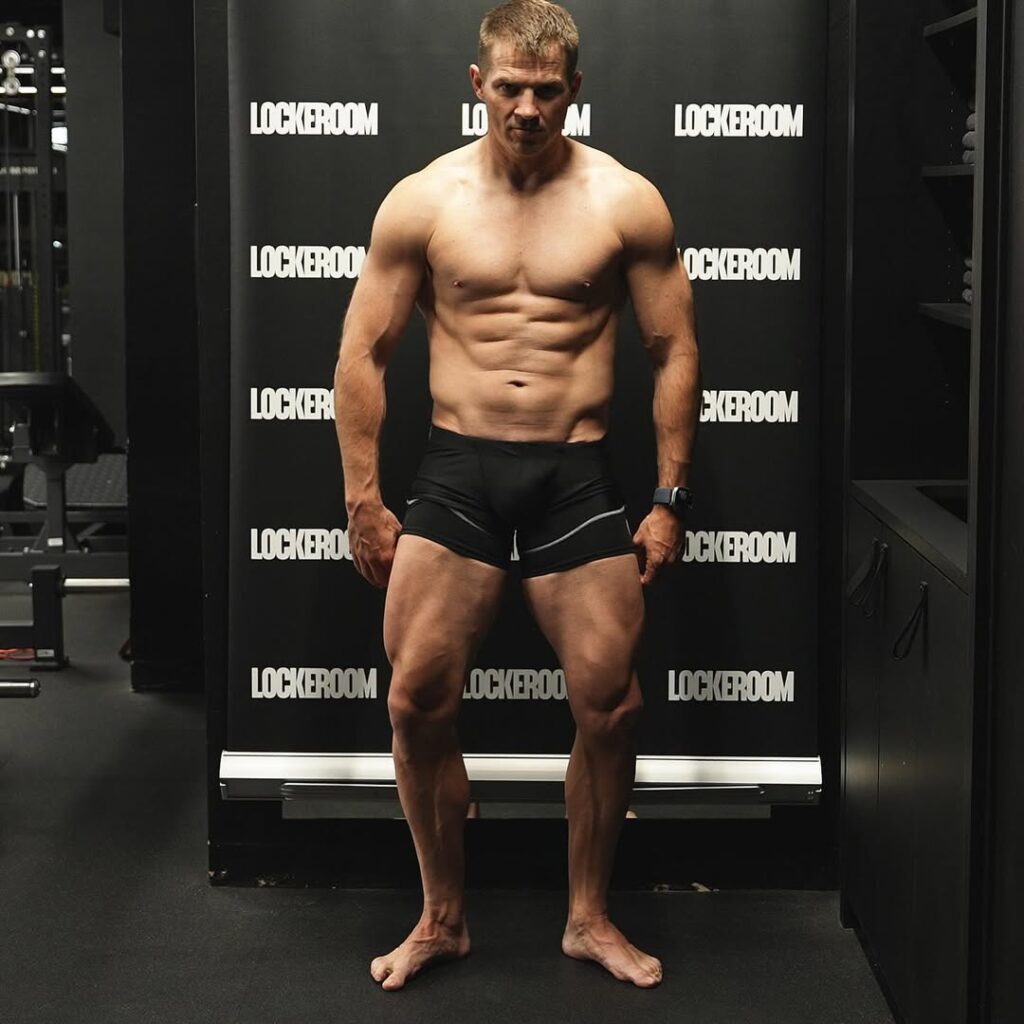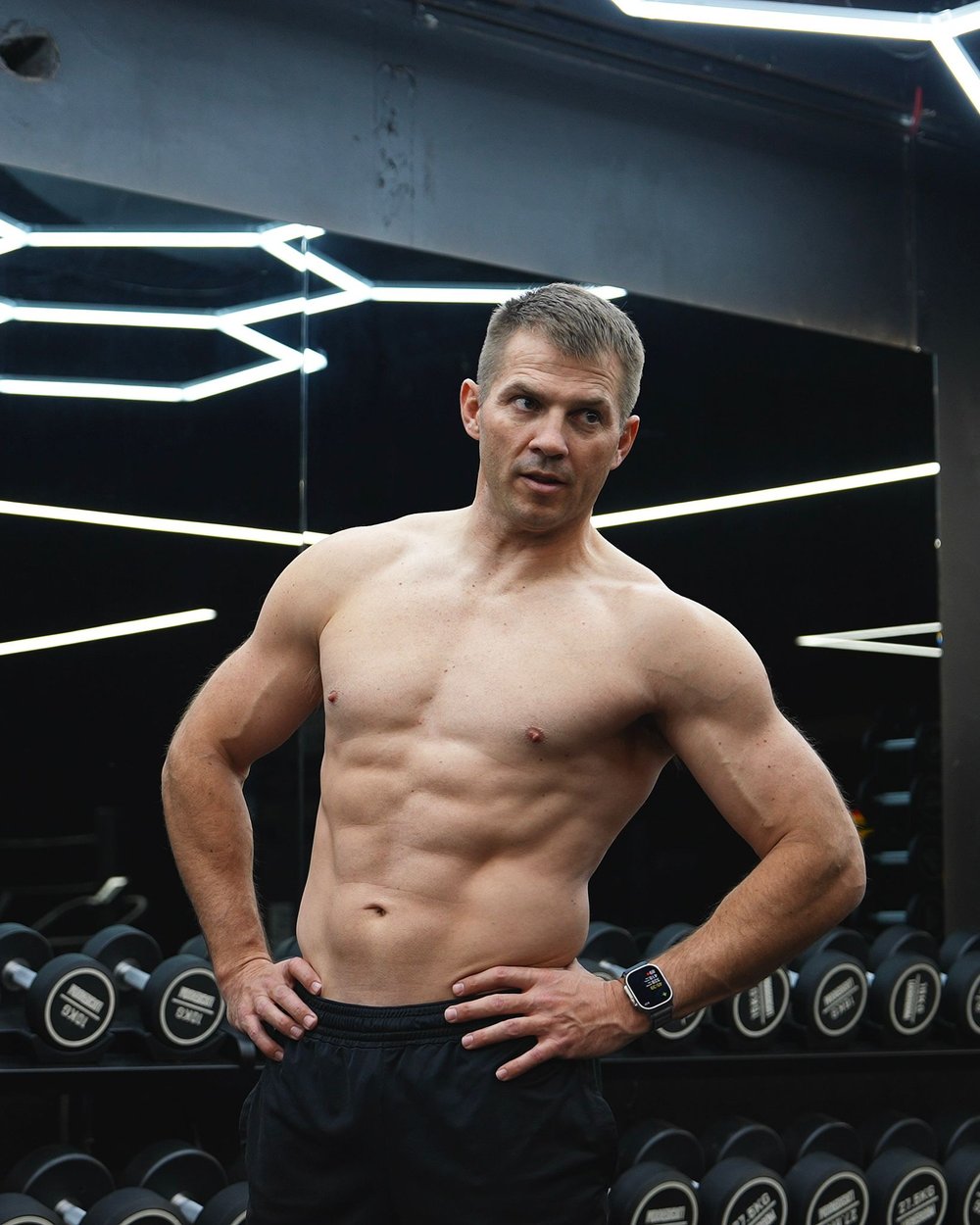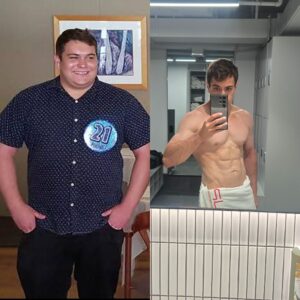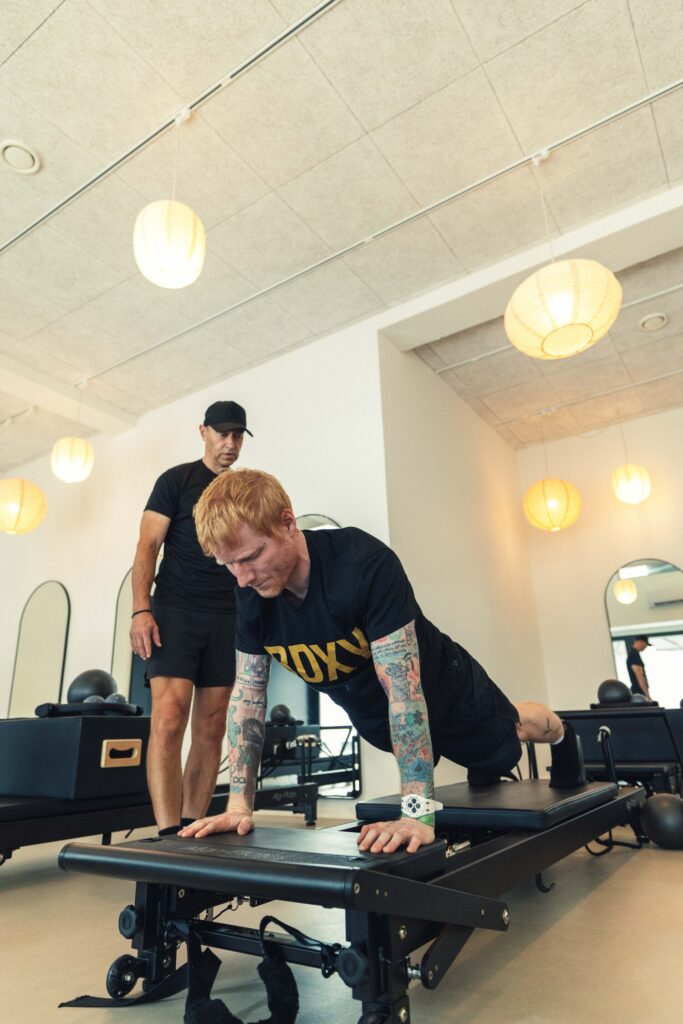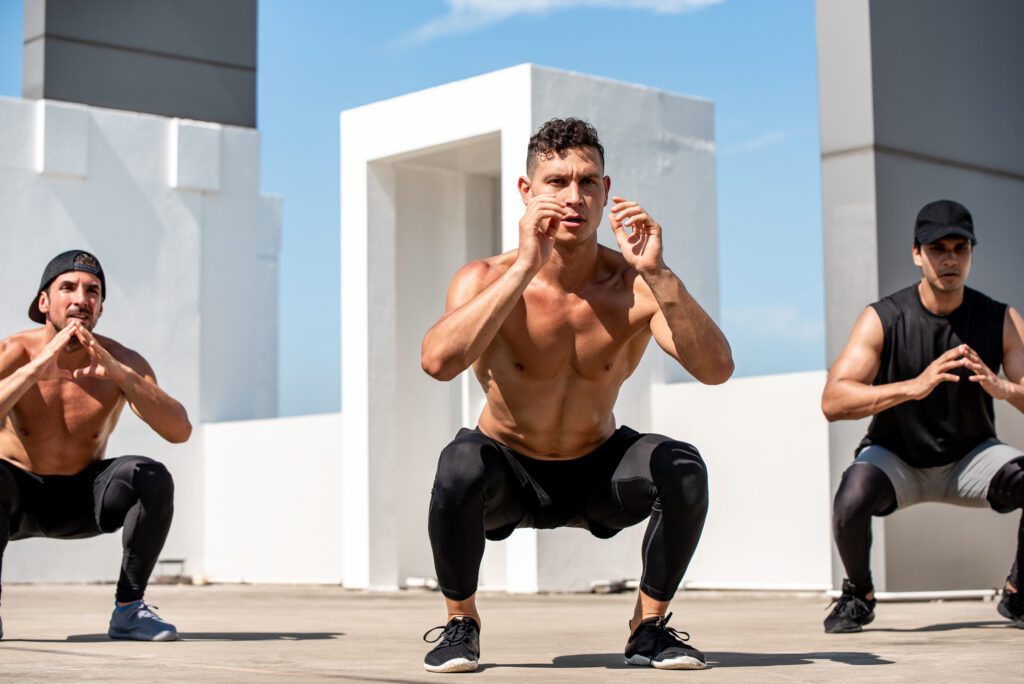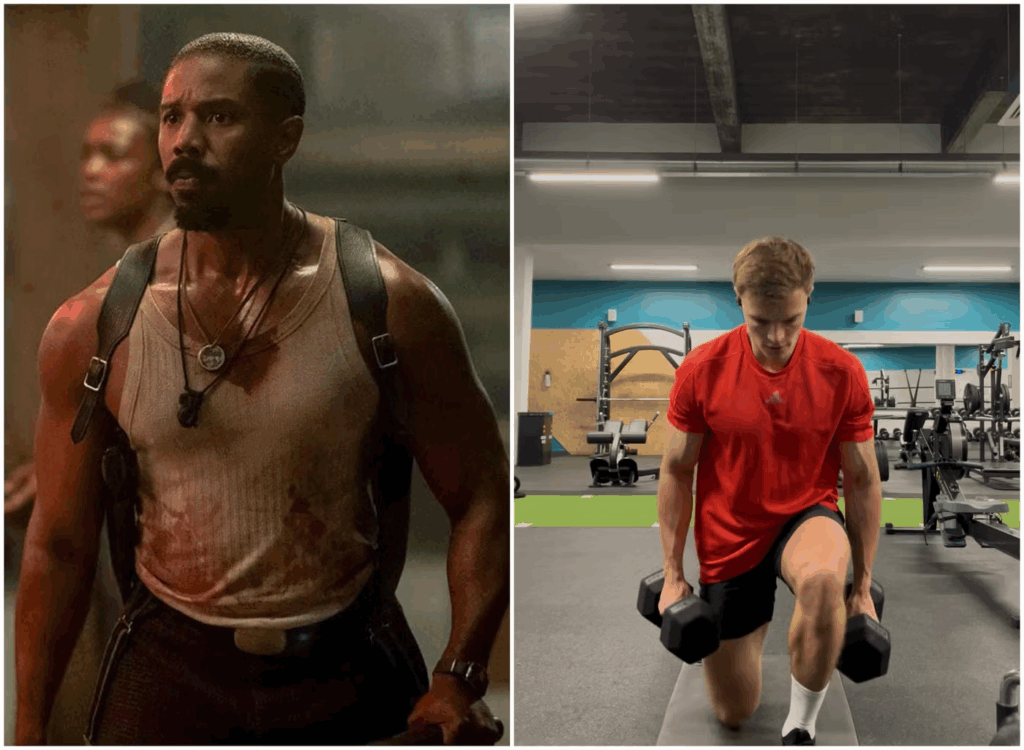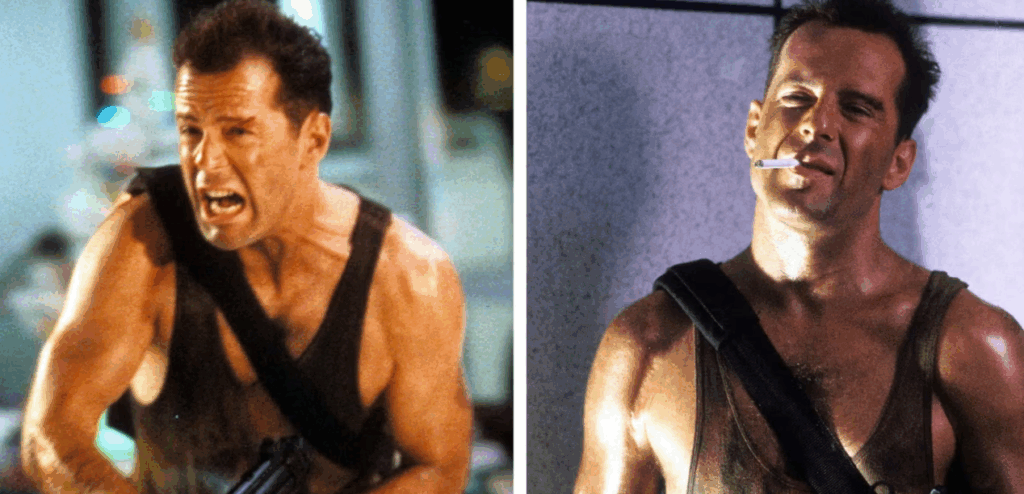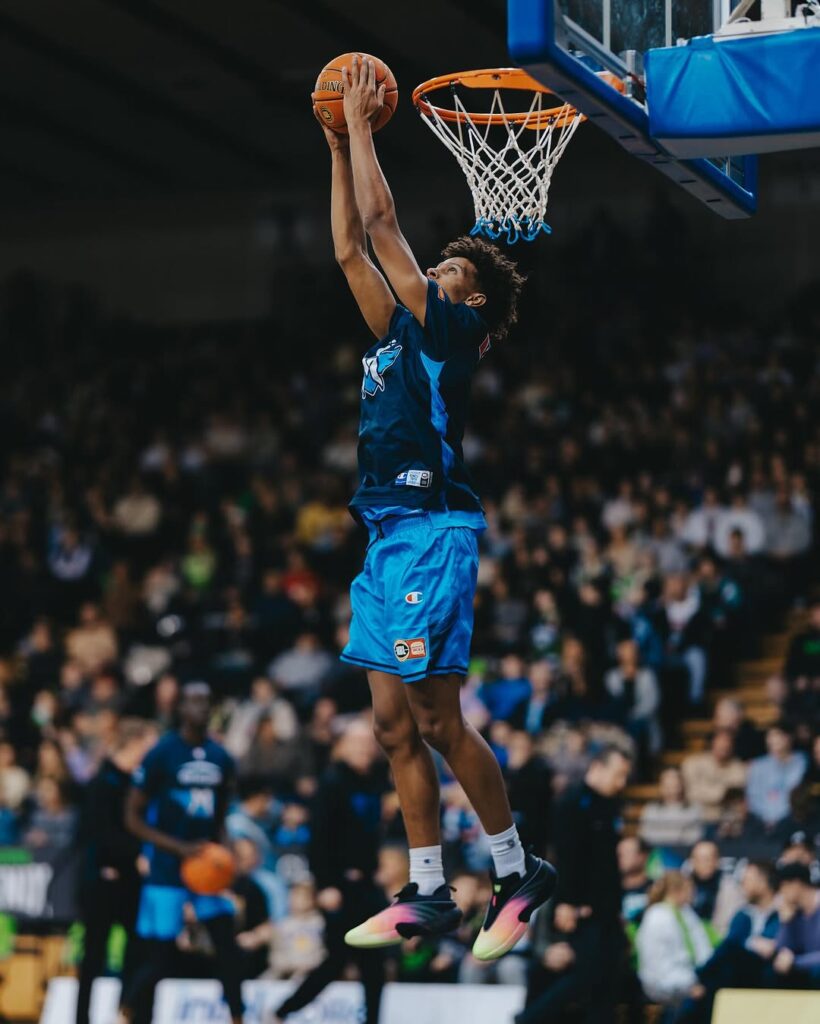DREW MITCHELL carved out an international rugby career that spanned more than a decade with his rare blend of speed, strength and raw physicality. Earning 71 caps for the Wallabies over 11 years, there’s a case to be made that Mitchell was once one of the fittest men on the planet. So, when he decided to get in the best shape of his life at 41, he had a tall task ahead of him.
Mitchell didn’t only want to get in the best shape of his life, he wanted to increase muscle mass and reduce body fat while stabilising and protecting old injuries. To do so, he enlisted the help of trainers at Lockeroom gym in Sydney.
Lachlan Rowston, the founder of Lockeroom, says training Mitchell came with some unique challenges. “I would say [Mitchell] was less motivated on average than other clients as he was still riding the benefits of being an elite athlete for such a long time,” Rowston says. “In other words, he can put in very little effort and still be in better shape than 99 per cent of people his age.”
Mitchell’s background in rugby did make things easier, however, according to Rowston. “His strength is world class,” he says. “Drew is very strong for his weight, especially through his legs.”
Ultimately, Mitchell accomplished everything he set out to achieve. He went from 95kg to 87kg and leaned out to around 10 per cent body fat. As Rowston says, “The average person looking to get fit typically spends months trying to get themselves into a good routine, but Drew was able to change everything within the space of weeks and be fully committed.”
Here, Mitchell explains his motivations and the challenges of the process in his own words.
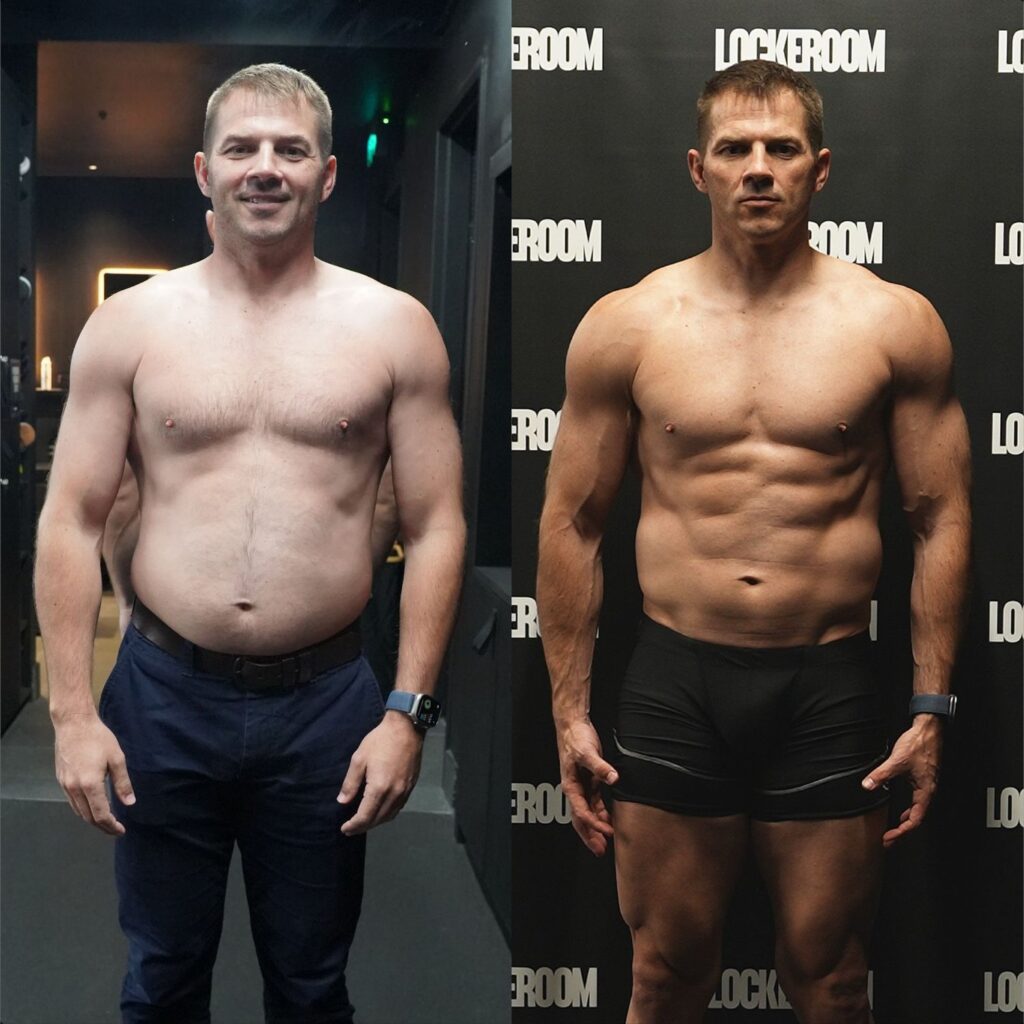
“IN THE YEARS since I retired from rugby, my fitness has been pretty sporadic. I’m a bit of a yo-yo trainer in that sometimes I train a lot, and sometimes I don’t do much at all.
When I was still playing, my relationship with fitness was outcome focused: I worked out to achieve an outcome I wanted like selection in a team. Once I retired, I didn’t really have the motivation to do that anymore because I didn’t have anything in particular that I wanted to achieve. I became more aesthetic-focused. If I didn’t like what I saw in the mirror, I’d train hard for a few months until I was happy with myself, but then I’d slack off again.
The reason I decided to take on this challenge was a combination of the encouragement from the guys at my gym, Lockeroom, and the fact that I want to play a couple of games for the classic Wallabies against the Lions legends. I was in great condition earlier in my career when I was still playing, but I haven’t played in eight years now, so I didn’t have a great deal of confidence in myself.
Now that I’m in my forties I also feel like it’s more important that I look after myself. It’s more difficult when you’re outside of that structured training environment where your fitness is part of your job and you have a routine built around you.
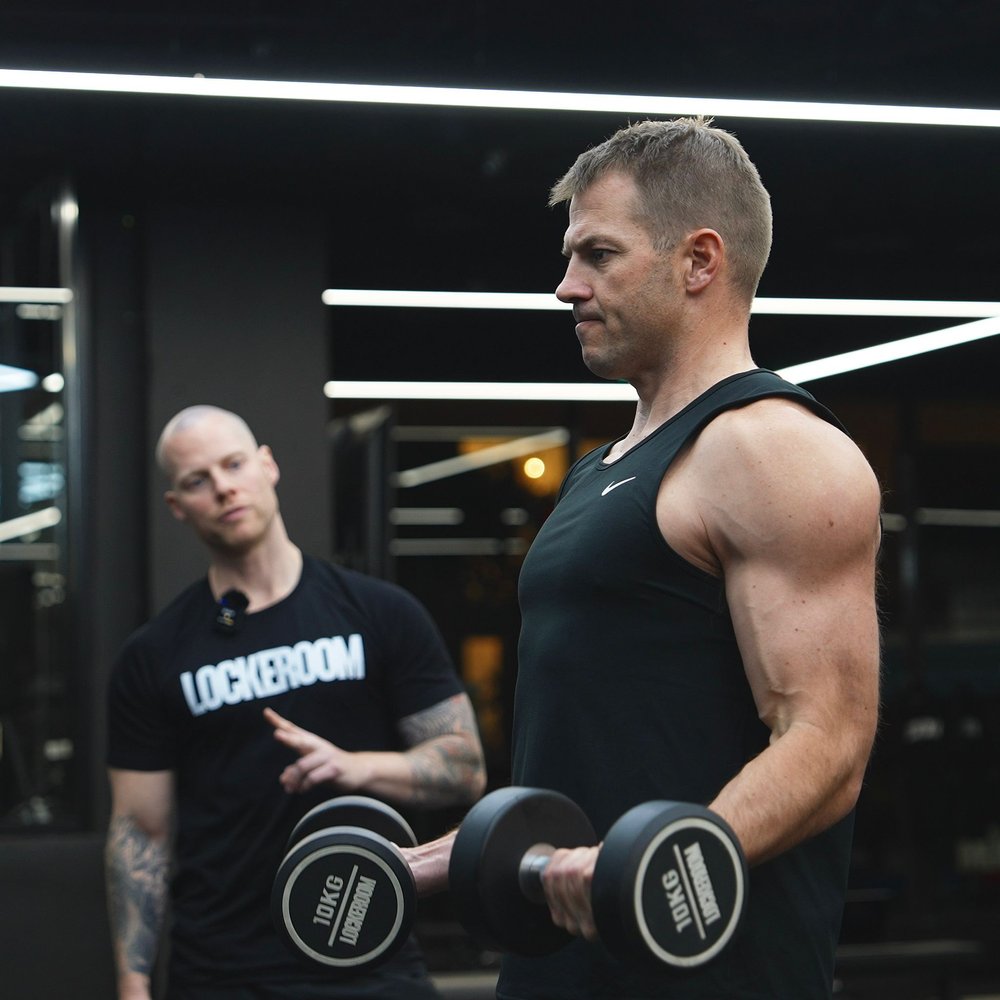
I started with a few goals in mind. I came in with 24 per cent body fat and I wanted to get down to ten per cent. For my weight, I wanted to go from 96kg to 85kg. Those goals changed though because I quickly realised that while I was burning fat, I was also gaining muscle and therefore not losing much weight. So I started to focus more on body fat percentage.
I was doing four gym sessions a week – Monday, Tuesday, Thursday, Friday – and then I’d do maybe 20 minutes of cardio at the back end of those. I’d also try to do one extra session on the weekend, whether that’s also in the gym, a run or another form of cardio.
My daily step count started around 12,000 a day, then it went to 13,000 and I finished up at about 15,000 per day by the end of it. To get my steps in I’d go out and take calls and just do laps around the city.
Drew Mitchell's training routine
Monday – Upper body and 20 min cardio
Tuesday – Lower Body and 15 min cardio
Wednesday – Rest
Thursday – Upper focus and 15 min conditioning
Friday – Lower body and 10 min cardio finisher
Saturday (optional) – Sport specific sprint drills 40-50min
Sunday – Rest
Upper body day
Barbell bench press – 3 sets of 5
Dumbbell bench press – 3 sets of 6
Seated rows – 3 sets of 6
Barbell bicep curls – 3 sets of 8
Tricep pressdowns – 3 sets of 8
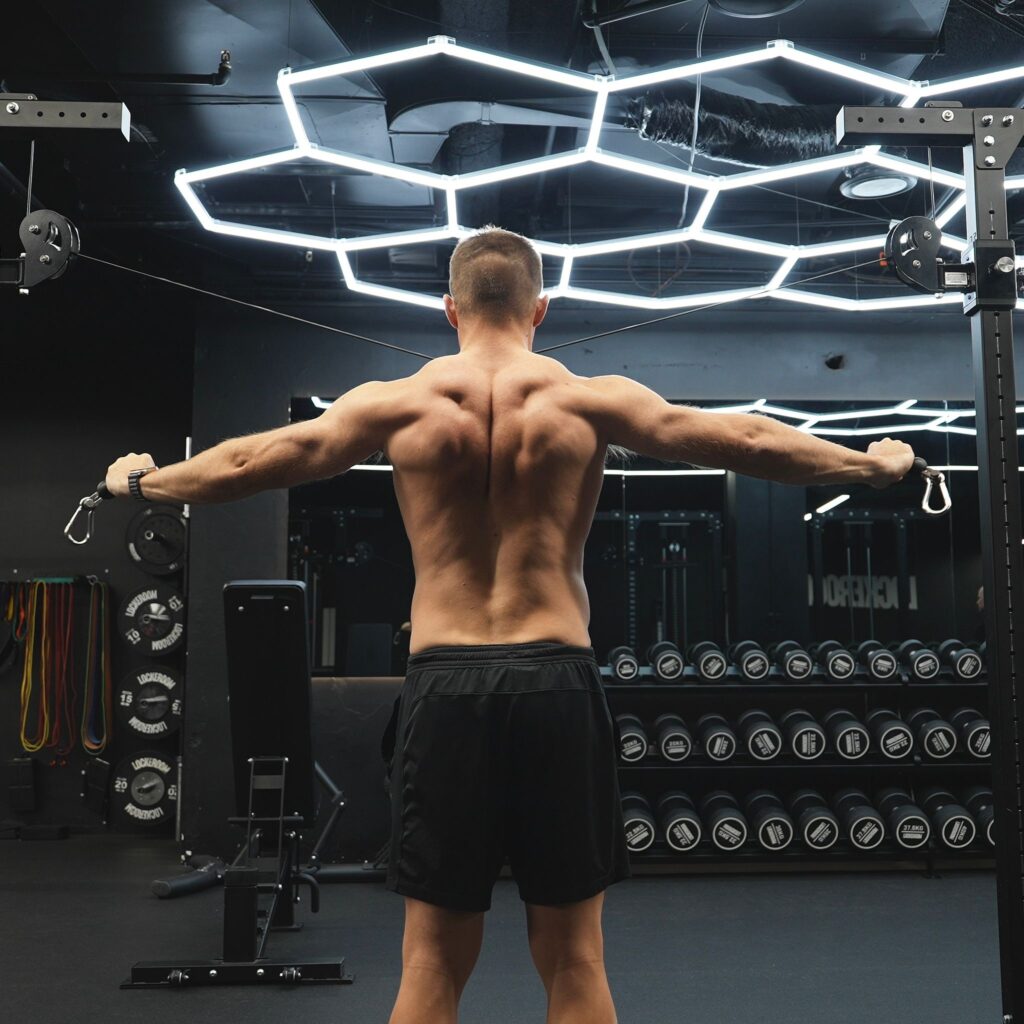
Lower body day
Reverse lunge to box leg drive – 2 sets of 10
Single leg calf raises – 2 sets of 10
Back squats – 3 sets of 5
Barbell squats – 3 sets of 5
high bar squats – 3 sets of 5
Split squats – 3 sets of 6
Side bends with dumbbells – 3 sets of 6
Seated leg extensions – 3 sets of 6
Drew Mitchell's diet plan
Meal 1 (breakfast):
500ml of electrolyte infused water
Two eggs
Half avocado
Tomato
100g chicken
Post workout:
Rokeby protein shake
1 medium banana
1x yo pro
Meal 2 (lunch):
Mitch’s Meals (food prep company)
Char Sui Chicken
150g chicken
50g brocollini
200g white rice
Meal 3 (lunch):
Mitch’s Meals (food prep company)
Steak brown rice (420 calories)
200g steak
50g brocolini
200g brown rice
Optional snack:
Protein bar
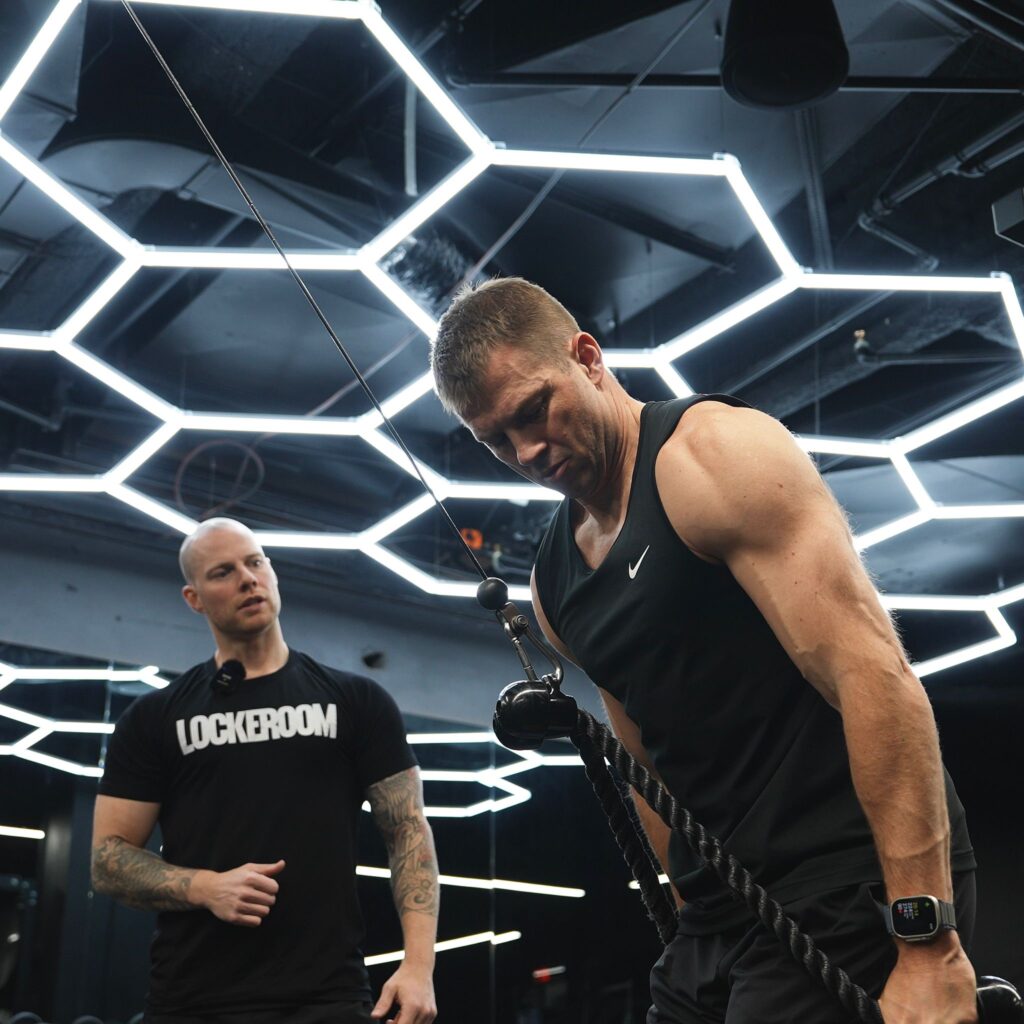
Working with body composition scanners took me back to my rugby days when I used to do all kinds of testing. It can be nerve wracking because you can get exposed by those things. You think you’ve had good week and it’ll tell you the truth more than a regular scale can.
It’s also a better way to measure progress because the number on the scale doesn’t always tell the full story. All sorts of little things come into bodyweight, like how hydrated you are, so body fat percentage is better in my opinion. The scanners can also give you in-depth data, which helped me a lot with my nutrition.
My trainers at Lockerroom were great. They really led the charge throughout the ten weeks. I think it’s a good idea to have a strong relationship with your trainer where you can be honest with them and tell them when you’re feeling flat or needing a bit more energy. They know how to get the best out of you and hold you accountable.
For me, I was sending my trainer Dom Costello my step count, my weight, my food intake and my hydration every day so he could keep track of it and see how I was going. If I was doing something wrong, he’d let me know.
Moving forward, I’m probably not going to be able to maintain ten per cent body fat. I’ll be happy if I can sit around 15 per cent. That’s probably the sweet spot for me in terms of feeling good and energised, while also being sustainable. That’s all I really want at the end of the day, to feel good. And I do now.
